A moment of visibility for Puerto Rican artists in U.S. museums
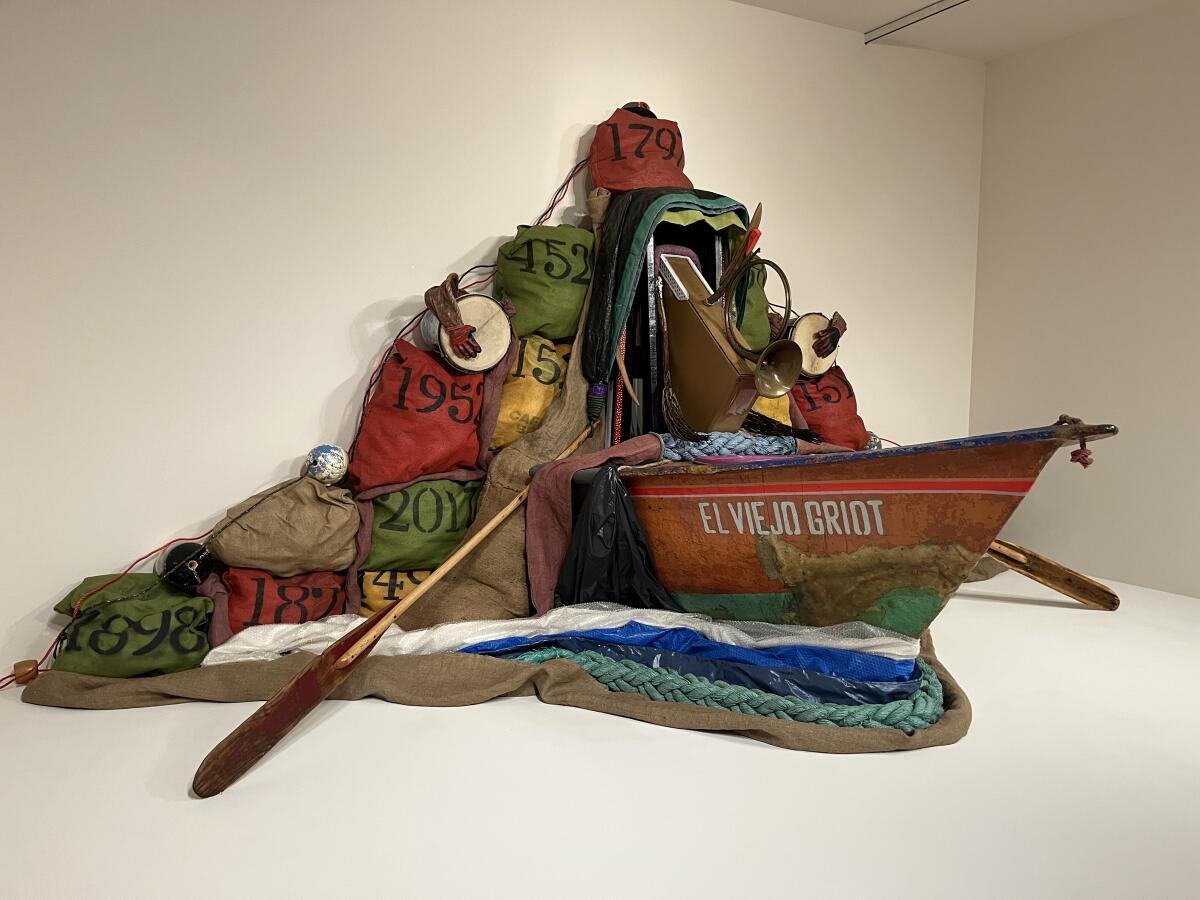
Are you Team Barbie? Team Oppenheimer? Or Team Allan? I’m going with Allan, who is definitely the popular choice. I’m Carolina A. Miranda, art and design columnist for the Los Angeles Times, and I’m ready to beach and fill you in on the week’s essential arts news.
Boricua artists represent
Over the last year, as I’ve worked to complete a monograph on Nuyorican painter Juan Sánchez (almost there!), I’ve had the opportunity to dive into Puerto Rican history (art historical and otherwise) and into the particulars of artistic movements that have emerged from the island as well as the expansive diaspora now based in the United States. (Puerto Ricans in the U.S. have outnumbered those on the island since 2006.)
Despite the presence, the Puerto Rican experience has remained underrepresented in major arts institutions in the U.S. When the group exhibition “no existe un mundo poshuracán: Puerto Rican Art in the Wake of Hurricane Maria” opened at the Whitney Museum in November, New York Times critic Holland Cotter noted in his review that it was the first major survey of Puerto Rican art in a major U.S. museum in almost half a century.
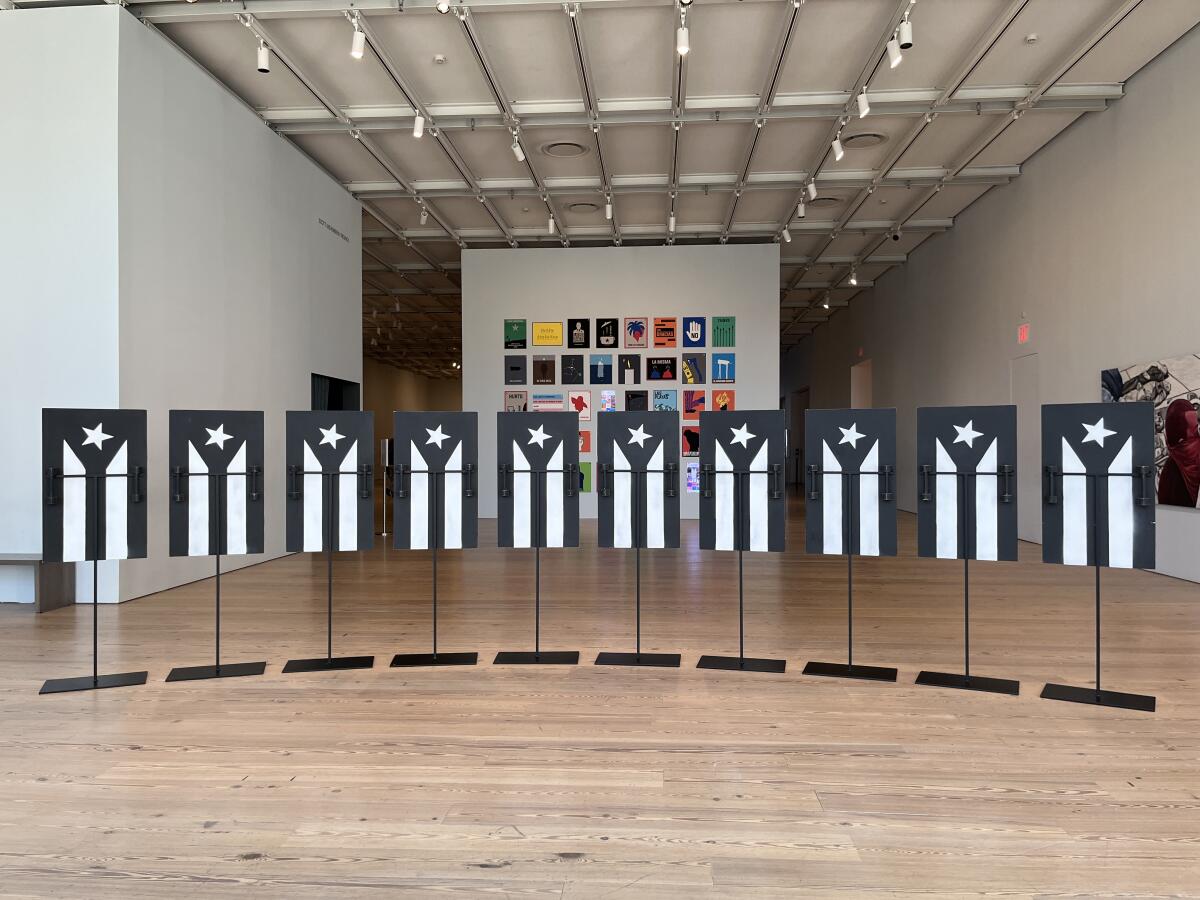
This singular absence speaks to the greater historical absence of Latinos in major U.S. cultural institutions. It also reflects the unique dilemma of Puerto Rican culture: Among the global intelligentsia, the U.S. colony is often regarded as not quite the U.S., not quite Latin America.
The ongoing exhibition “Afro-Atlantic Histories,” currently on view at LACMA, provides a good example of how Puerto Rico is overlooked in sweeping exhibitions that purportedly cover the breadth of the continent. The show, which explores the connections between Africa and the Americas as a result of the transatlantic slave trade, features not a single Puerto Rican artist.
Make the most of L.A.
Get our guide to events and happenings in the SoCal arts scene. In your inbox once a week.
You may occasionally receive promotional content from the Los Angeles Times.
This is curious, given the abundance of iconic Puerto Rican artworks centered on Black life — such as Francisco Oller‘s “El Velorio,” from 1893, which depicts a baquiné, a wake held to mark the death of a child in the Afro Boricua tradition. Absent from sections that touched on civil rights were the Young Lords, the militant Puerto Rican civil rights group that emerged in Chicago in the late 1960s and later became prominent in New York (having an important influence on culture there). Also absent: any depiction of Pedro Albizu Campos, the mixed-race Puerto Rican independence leader who materializes regularly in art.
The traveling exhibition was organized by the Museum of Fine Arts, Houston and the Museu de Arte de Sāo Paulo Assis Chateaubriand, in collaboration with the National Gallery of Art in Washington, D.C. The National Gallery’s installation did include a sculpture by Puerto Rican artist Daniel Lind-Ramos (more on him in a bit), but he doesn’t figure in the show’s catalog.
The absence is glaring.
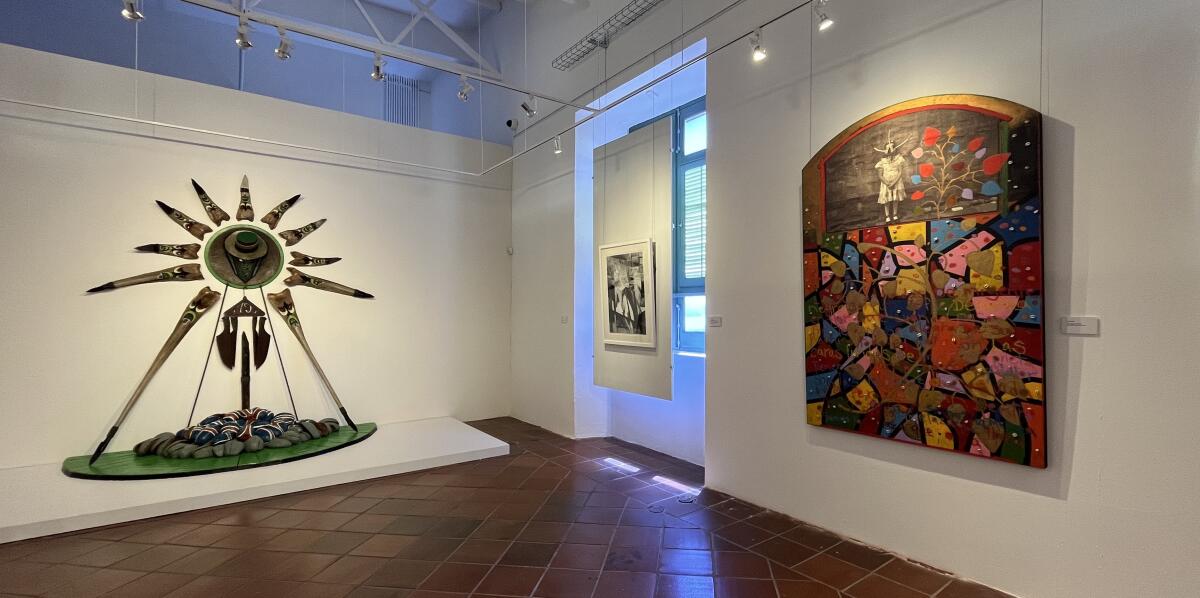
Thankfully, this year, “Afro Atlantic Histories” was more the exception than the rule. The Whitney’s group exhibition was critical in bringing visibility to Puerto Rican artists, as was another important group show, “Forecast Form: Art in the Caribbean Diaspora, 1990s to today,” which was on view at the MCA Chicago this past spring — and will land at the Museum of Contemporary Art San Diego next year. (I wrote all about these exhibitions for the New York Review of Books earlier this month.)
Next month, the MCA Chicago will open another survey focused specifically on Puerto Rican artists called “entre horizontes: Art and Activism Between Chicago and Puerto Rico,” and currently the New Museum of Contemporary Art in New York City has a solo show by installation artist Pepón Osorio. It joins an ongoing solo show by Lind-Ramos at MoMA PS1 that features almost a dozen of the totemic assemblages for which he has become known. These employ a variety of found materials — pieces of vegetation, musical instruments, old FEMA tarps, scraps of rope and various bits of industrial detritus — to create pieces that evoke spiritual deities and reference the island’s colonial histories. The New York Times’ Cotter described it in his review as “a fantastic terrestrial and celestial mystery tour of an exhibition.”
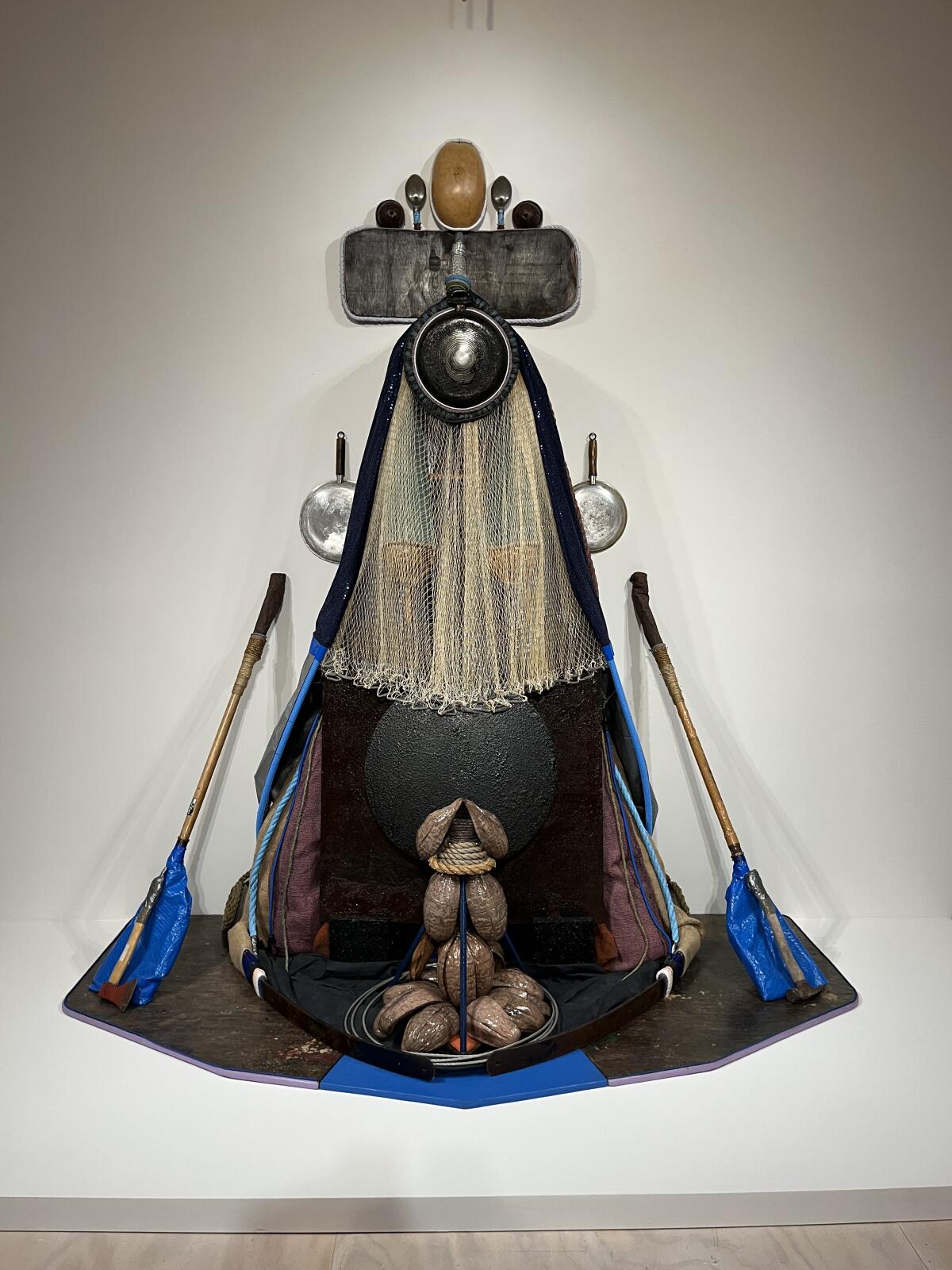
I caught the exhibition when I was trotting through New York early last month, and it is powerful. Lind-Ramos is a master of material, transforming old tarps into water and figures that feel like apparitions of the Virgin Mary; he is also a master of critique, taking jabs at colonial power in Spain and the U.S. But his figures also resonate with the history and culture of his native Loiza, a town that was originally settled by free Blacks. His work stands in acknowledgment of vital tradition.
The show is on view through Sept. 4. If you happen to be in New York, do not miss it. If you aren’t going to be in New York any time soon, check out the recent episode of Art21 devoted to his work. It is illuminating.
In the galleries
Virtual reality, notes art critic Christopher Knight, can often feel like a stunt in the context of an art exhibition. But it’s put to smart use in a new multilayered installation by Glenn Kaino called “Aki’s Market” at the Japanese American National Museum. The project is inspired by a market run by the artist’s grandfather in East L.A. in the 1950s and ’60s that Kaino has reconstructed — based entirely on family lore — in various media. “Marvelously orchestrated, the work evolves from an anonymous abstraction into an increasingly personal narrative,” writes Knight. “A viewer’s engagement is surreptitiously enticed.”
At Gagosian in Beverly Hills, a new project by Urs Fischer may look like an ad, but it isn’t. On a 12-foot cube wrapped in video screens, the artist is presenting a fever dream of advertisements from 1950 to the present that have been sorted, combined and reinterpreted using artificial intelligence — a way of exploring how images are used to move merch. “It’s a strange thing,” Fischer tells The Times’ Steven Vargas, “that advertisements are so omnipresent and it’s so influential for all of us.”
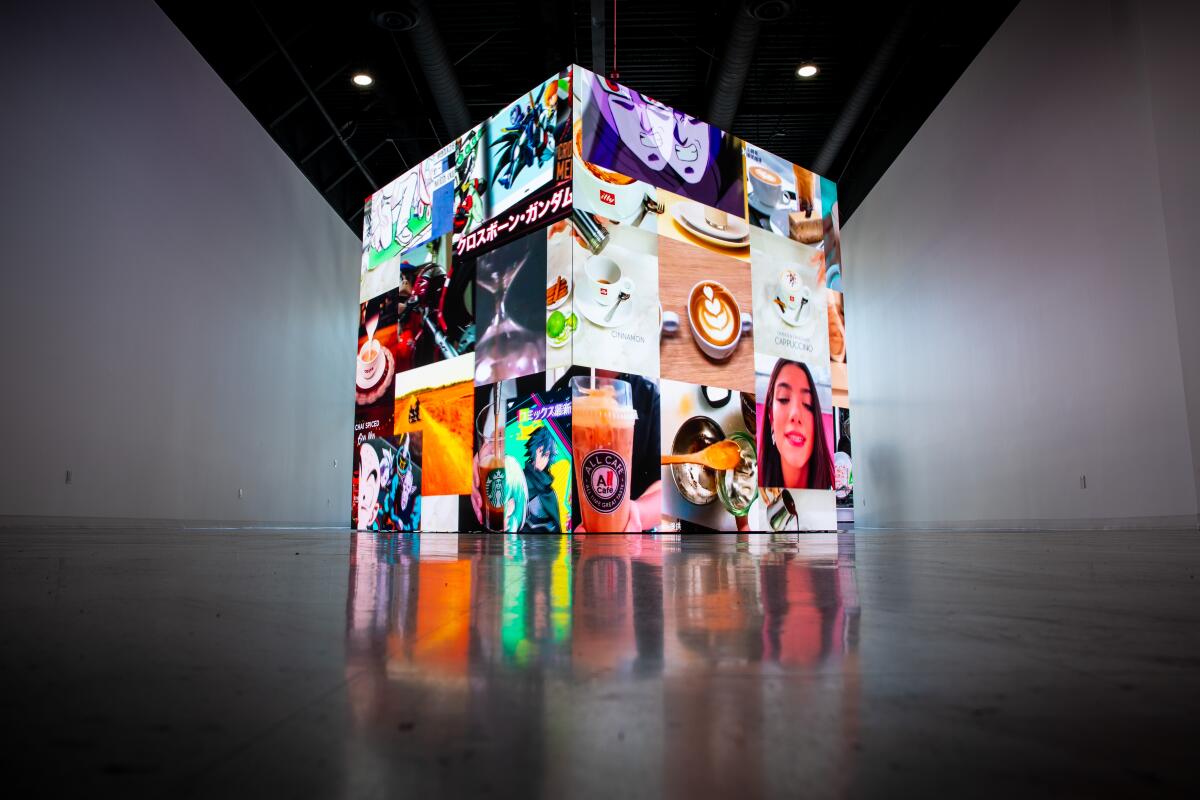
Since we’re on the subject of Gagosian ... the profile of Larry “GoGo” Gagosian by Patrick Radden Keefe in the New Yorker has been the chatter of social media: the meteoric rise, the allegations of dining and dashing in his early days (which he denies), the allegations of dirty phone calls as a young man (also denied), the construction of value, the fact that he doesn’t like to sell to museums (“then I can’t get them back”) and the wildly unregulated nature of it all. It certainly raises questions: about his carbon footprint (which must be spectacular) and his gallivanting around with Russian oligarchs and Leon Black.
Aaaand since we’re on the subject of Black: The MoMA trustee has been accused of sexually assaulting a 16-year-old girl in Jeffrey Epstein‘s townhouse in 2002, according to a federal lawsuit filed this week. Black denies the allegations, with his lawyers describing the lawsuit at “frivolous and sanctionable.”
The Washington Post’s Philip Kennicott is NOT a fan of Kehinde Wiley‘s show at the De Young in San Francisco. “The completed works offer none of the pleasures and surprises afforded by good painting,” he writes. “Their surfaces are immaculate, flat and utterly dead. It doesn’t matter how close you get.”
And Hyperallergic contributor Matt Stromberg reacts to that Vanity Fair piece that claimed art galleries were reviving a “desolate” stretch of L.A. — a desolate stretch that actually happens to be one of the densest corridors in the city.
On and off the stage
Center Theatre Group has announced its 2023-24 season, and leading the charge will be Michael R. Jackson‘s Pulitzer- and Tony-winning play, “A Strange Loop,” about a Black gay man writing a musical about a Black gay man. The lineup also includes a “Funny Girl” revival and “A Christmas Story, the Musical.” Among the other productions is “Hadestown,” which was in L.A. last spring, making a return.
Enjoying this newsletter? Consider subscribing to the Los Angeles Times
Your support helps us deliver the news that matters most. Become a subscriber.
Classical notes
Gustavo Dudamel’s summer run at the Hollywood Bowl ended a week ago, just two weeks after the season kicked off. But while the Summer of ‘Tavo has been short, it has been very busy, reports Times classical music critic Mark Swed. “He conducted three different Bowl programs, with a wide range of music that included everything from John Williams film scores to Broadway show tunes to Verdi’s operatic Requiem,” writes Swed. “He worked with the YOLA National Chamber Orchestra and YOLA National Symphony Orchestra, a workshop for 170 talented music students between the ages of 12 and 18 from around the country. That culminated in a concert in which he not only conducted but also made a surprise appearance joining in the violin section.”

Moves
Artist Jeffrey Gibson, a member of the Mississippi Band of Choctaw Indians who is also of Cherokee descent, will represent the United States at the next Venice Biennale. He is the rare Indigenous artist to do so; in 1932, a small group of Native artists, including Hopi artist Fred Kabotie, presented at the international show.
Amada Cruz has been named the new director of the Santa Barbara Museum of Art. Cruz joins the institution from the Seattle Art Museum, where she had served as director and CEO since 2019.
The Rabkin Foundation announced its art journalism grants for 2023, and among the winners are former L.A. Times scribe and current New York Times contributor Jori Finkel, columnist and author Rebecca Solnit and New York-based writers Maximilíano Durón and Jillian Steinhauer.
The Fine Arts Museums of San Francisco announced a gift of the Bernard and Barbro Osher Collection of American Art, which includes 61 artworks by figures such as George O’Keeffe, Winslow Homer, Thomas Eakins and many others. Director Thomas P. Campbell describes the gift as “transformative.”
And the Lucas Museum in Los Angeles has added a study for Géricault’s “Raft of the Medusa” — which I’m incredibly excited about because my dad once painted a copy of that work and it hung for decades in my aunt’s dining room in Lima, which is definitely an interesting location for a painting that alludes to cannibalism.
Passages
Sinéad O’Connor, the Irish singer who achieved global fame for her haunting performance of “Nothing Compares 2 U,” followed by notoriety for tearing up the pope’s picture on stage, has died at 56.
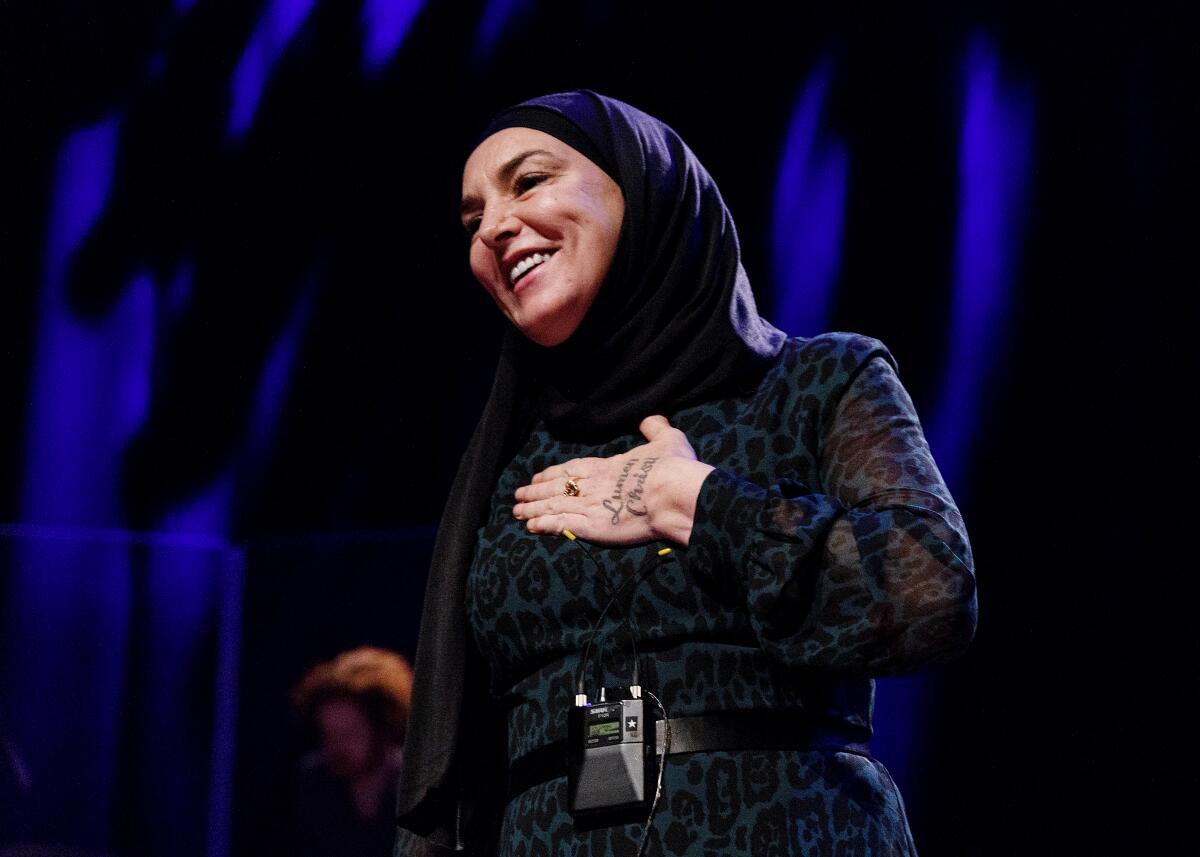
Ales Pushkin, a dissident artist in Belarus who once dumped a pile of manure outside the presidential offices in Minsk in a jab at the country’s authoritarian leader, is dead at 57.
Richard Barancik, the last surviving member of the Monuments Men, an Allied Unit that helped preserve art looted and hidden by the Nazis in the wake of World War II, has died at 98.
Pamela Blair, one of the original performers in “A Chorus Line” on Broadway, is dead at 73.
In the news
— The New York Times reports on the crisis in U.S. theaters. Interviews with 72 top-tier regional companies outside of New York point to a future of 20% fewer productions with “shorter runs, smaller casts and simpler sets.”
— A production of Wagner’s “Parsifal,” led by U.S. director Jay Scheib and incorporating augmented reality glasses for the audience, has led to conflict between the Bayreuth Festival‘s financial and artistic teams.
— My colleague Alejandra Molina interviewed Ricardo Alberto Maldonado, the Puerto Rican poet who will lead the Academy of American Poets.
— President Biden has established a national monument to honor Emmett Till and his mother, Mamie Till-Mobley.
— L.A. is slated to host the 2028 Olympics. According to Jules Boykoff and Dave Zirin, it’s looking mighty expensive.
— Lehrer Architects and Kadre Architects have released a free standard ADU plan for L.A. residents.
— Culver City plans to open a “safe sleep” site for unhoused people that features 20 tents.
— I enjoyed this episode of “Our Opinions Are Correct,” about why Ayn Rand is so popular in Silicon Valley.
And last but not least ...
Speaking of the tech industry, specifically that Twitter logo rebrand: “While some people are getting X Windows System logo vibes, several designers have detected an uncanny resemblance to the ‘X’ in widely available typefaces, including Monotype’s Special Alphabets 4.”
The biggest entertainment stories
Get our big stories about Hollywood, film, television, music, arts, culture and more right in your inbox as soon as they publish.
You may occasionally receive promotional content from the Los Angeles Times.




